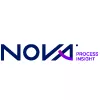Raman Based Metrology for Leading-Edge Semiconductor Nodes
Over the recent years, a revolution is brewing in the semiconductor industry. The long-standing trend of transistor density increase and performance-per-watt improvements, described by Moore’s law and Dennard scaling, are now facing fundamental physical limits.
However, this crisis has led to a flurry of innovation and revolutionary new approaches for semiconductor design and operating principles, enabling new ways to improve performance.1
A key ingredient in this transformation involves the use of new materials, compounds, and control over material properties as part of the device design. The use of novel materials and their manipulation, raises the need for corresponding analytical and metrological techniques for process control. One such technique is Raman spectroscopy, which is already recognized as a high-end metrology solution in the petrochemical and pharmaceutical industry for both qualitative and quantitative analysis2. Nonetheless, to date, its uptake by the semiconductor industry has been limited to laboratory applications. Thanks to technological improvements in all key components used in this approach – from ultra-stable laser sources, high-end filters and low-noise detectors, this 90-year-old technique is now becoming a promising and flexible metrology technique for use in high-volume semiconductor fabrication.
Raman Spectroscopy
Raman spectroscopy (RS) can be used to investigate the vibrational structure of materials and molecules in a non-destructive manner. This is accomplished by measuring the energies of inelastically scattered light from the target of interest. Raman-active materials have a characteristic ‘fingerprint’ in their Raman spectrum, which can be used to identify them as well as study their physical properties. Furthermore, different molecular structures and crystal phases typically give rise to completely distinct Raman spectra, allowing easy identification and differentiation.
RS provides access to extremely diverse material characterization tasks, including stress/strain measurements, defectivity, residue detection, composition and activated doping levels. However, this technology cannot be trivially adapted for in-line, high-volume manufacturing (HVM): RS is typically slow, requires frequent calibrations and easily affected by environmental conditions such as acoustic and vibrational noise and temperature fluctuations. This is where NOVA Elipson™ makes the difference – offering fast, ultra-stable, self-calibrated and fully automatized RS-based metrology.
NOVA Elipson ™ for in-line Raman Measurements
The NOVA Elipson™4 is a high end in-line metrology tool, bridging the chasm between lab and fab metrology and bringing Raman Spectroscopy to high volume manufacturing. It combines several unique design features to provide accurate and flexible measurements that can be adapted to monitor a range of material properties – for R&D and HVM 5.
The platform allows a range of excitation wavelengths from the UV to visible and has diagnostics to continually monitor the laser output wavelength and power. The laser is coupled into the system via a high precision fiber-dock station, making on-site servicing straightforward.
Combination of multiple wavelengths allows Nova Elipson to create Z-sensitive profiles of various material properties – such vertical strain distribution or poly Si crystallinity and grain size along high aspect ratio geometries.
One of the challenges of Raman measurements is that the scattered signal is extremely weak. Furthermore, the wavelength of the Raman signal is often extremely close to the exciting laser line, causing a significant challenge of efficiently filtering out the laser line from reaching the detector. The entire design of the Nova ElipsonTM is built around these challenges, offering fast Raman detection at a very broad detection range for all excitation wavelengths. Finally, as stated, the tool is designed for seamless, automatic, ongoing calibration protocols, satisfying the stringent precision requirements of the fab environment.
Where spatially-resolved measurements are required, particularly for mapping local regions, the NOVA ElipsonTM can be used for Raman microscopy with a sub-micron spatial resolution. This way, localized properties within (e.g.) a single region of a memory cell can be identified and the spectral information used for process control.
The Future of Fab Material Metrology
Historically, fab in-line HVM metrology solutions have been predominantly focused on dimensionalcharacterization. With the increasing diversity and complexity of materials used in the fabrication process and the nuanced control over their properties, material metrology and process control are soon becoming prevalent. This new arena presents an extremely diverse set of metrology needs, to which the NOVA ElipsonTM offers a flexible, fast, non-destructive and fully-automatized solution.
NOVA ElipsonTM has demonstrated high-end characterization capabilities for a broad set of use cases. These include logic applications – e.g. characterizing stress\strain, composition, active doping and defectivity and material residue identification in the transistor module. A similarly broad set of applications exists in the memory market, characterizing crystal phases and distinguishing between amorphous, poly-crystalline or crystalline Si, phase in emerging memory materials and induced strain. As this tool proliferates into the market, additional use cases are continuously identified and developed, further extending the potential applicability of RS for fab metrology.
References and Further Reading
- Lambrechts, W., Sinha, S., Abdallah, J. A., & Prinsloo, J. (2018). Extending Moore’s Law through Advanced Semiconductor Design and Processing Techniques. CRC Press.
- Paudel, A., Raijada, D., & Rantanen, J. (2015). Raman spectroscopy in pharmaceutical product design. Advanced Drug Delivery Reviews, 89, 3–20. https://doi.org/10.1016/j.addr.2015.04.003
- Khatibi, S., Ostadhassan, M., & Aghjanpour, A. (2018). Raman spectroscopy : an analytical tool for evaluating organic matter Raman spectroscopy : an analytical tool for evaluating organic matter. Journal of Oil, Gas and Petrochemical Sciences, 2(1), 00007. https://doi.org/10.30881/jogps.00007
- NOVA Elipson, Nova, (2021), https://www.novami.com/nova-product/nova-elipson/, accessed 20th January 2021
- Schmidt, D., Cepler, A., Oren, Y., & Fishman, D. (2021). In-line Raman spectroscopy for stacked nanosheet device manufacturing. Proceedings Volume 11611, Metrology, Inspection, and Process Control for Semiconductor Manufacturing XXXV;116111T 2021) https://doi.org/10.1117/12.2582181



